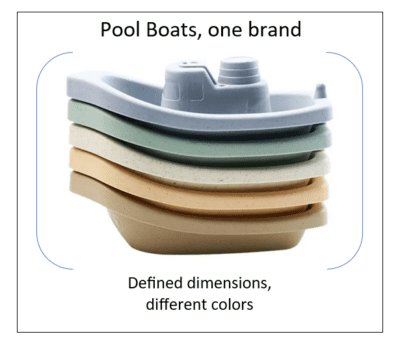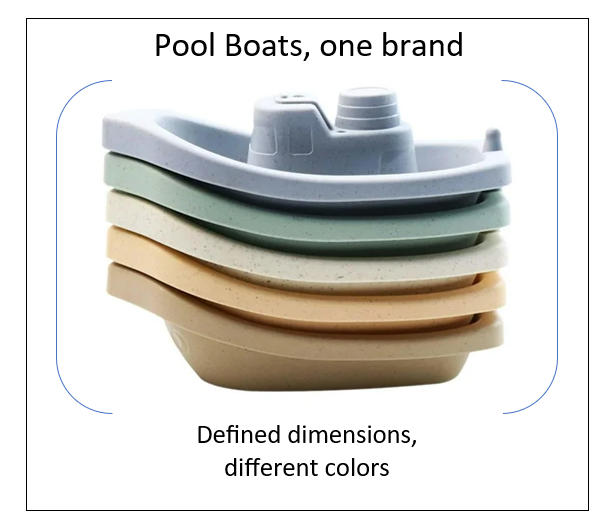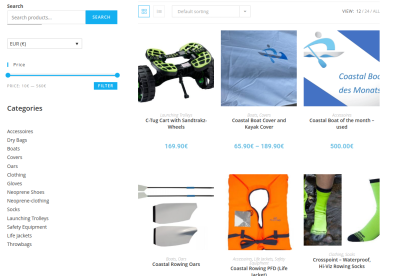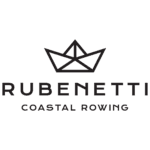We have dedicated considerable time to analyzing our industry and the strategic approach taken by event organizers regarding pool boats. Local clubs and smaller organizations typically include a wider range of boat suppliers in their pool, providing a diverse inventory to cater to their rowing communities. In contrast, World Rowing has, for the past years, adopted a strategy of offering boats from only one or two suppliers at their regattas. Is there a market impact of a pool boat strategy?
This raises important questions: What is the potential market impact of this strategy? How might the market evolve if this approach continues? The following provides a critical discussion of these issues. We would welcome your feedback and appreciate your opinions. More about this topic: Bring your own boat…
Unlike the World Rowing philosophy, most event organizers prefer to maintain a diverse pool of boats from various brands and hull types, ensuring broader accessibility and choice.
- Pool Boats as Standardized Boats: Many regattas provide standardized pool boats, supplied by the regatta organization. These boats have identical specifications to ensure a level playing field, focusing on the rowers’ skills rather than material advantages. This approach favors larger boat manufacturers.
- Pool Boats as Central Inventory: In this definition, a pool of different boat types is provided, allowing athletes to choose from a central inventory. This flexibility enables athletes to train in familiar boats and adapt to different weather conditions. It also creates a fairer playing field for smaller boat manufacturers. Also read: Pool boats and your boat planning 2025
Financial and market impact of a one or two pool boat strategy
Here is our conclusion to this analysis in short:
Conclusion and summery
Selecting one or two boat brands for events carries the risk of transforming the entire industry. Clubs and associations are likely to align their purchasing decisions with those of event organizers, potentially leading to reduced market competition and fewer choices for buyers. What happens if the event organizer later changes their strategy? Like any major decision, it’s essential to evaluate the broader environment and consider the long-term impacts before deciding what’s truly best.
Let’s open the discussion. Here is our hypothesis: The decision to select a single or maybe two pool boat brands for competition can have significant negative financial impacts on various stakeholders, including organizers, competitors, and sponsors. Here’s a result in 8 issues we see:
1. Impact of Exclusive Contracts on Costs for Event Organizers
Does exclusivity make sense?
Relying on just one or two boat brands can lead to increased costs due to limited competition among manufacturers. While the chosen brand may provide the necessary support today, it might not remain the most cost-effective option in the long run. This is a risk the event organizer needs to evaluate.
2. Loss of Broader Sponsorship Opportunities
What does exclusivity mean for sponsorships?
Partnering exclusively with one or two single boat brands may discourage other potential sponsors, such as competing manufacturers or equipment providers, from participating. This limits the pool of sponsorship opportunities. Imagine one bioat brand brings their own sponsored oars to the expense of the oar suppliers
Impact on non-affiliated sponsors:
Sponsors outside the selected brand’s network may feel excluded due to limited visibility opportunities, making them less likely to invest in the event.
3. Market impact of a pool boat strategy: Impact on Athletes?
What do athletes think?
Many high-performance athletes train with their own boats, becoming deeply familiar with them over time. Forcing competitors to use a specific brand may alienate those who own different boats, potentially reducing participation and revenue. Some athletes might even refuse to participate due to concerns over injury or competitive disadvantage. Coastal rowing athletes could be asked what they think. (Commission)
Training and adaptation costs:
Competitors may need to invest additional time and resources to train with the mandated brand’s boats, particularly if they differ significantly from their usual models. Take a World Champion who is rowing a non pool boat at home. Would he have a dissadvantage?

4. Flexibility During Events
Case study: The race in Genova
Exclusive reliance on one or two boat brand can lead to mismatches between boats and conditions. If the brand’s boats are unsuited for certain weather or course conditions, it can compromise the quality of the race, athlete safety, and the durability of the equipment.
5. Reputation Risks
Perception of favoritism:
Choosing one brand exclusively may be seen as favoritism, potentially damaging trust with stakeholders and harming the organizer’s reputation. Smaller, not selected manufacturers may loose market share, weakening competition in the industry.
Performance concerns:
If the selected boats underperform or exhibit flaws (e.g., structural issues or poor durability), the credibility of the competition may suffer, deterring future participants and sponsors. Problems like broken fins or gelcoat blisters could further harm the boat manufacturer’s reputation.
6. Financial Challenges for Suppliers
Should I buy a regatta boat?
Regatta boats are often sold at steep discounts after heavy use during events. Such boats may have unseen damage, posing risks for buyers. Additionally, advancements in technology could render these fleets obsolete within a few years, requiring costly replacements or upgrades.
7. Reduction in Supplier Diversity
The risk to smaller manufacturers:
Restricting the pool of suppliers to just one or two brands can have widespread consequences. Local and regional manufacturers, who might offer competitive pricing and benefits, could be excluded. This harms the broader economy, particularly in the host region, as smaller producers face higher costs due to reduced economies of scale.
Industry implications:
The market is already dominated by two large players. We have a Oligopoly / Duopoly. Two strong cometitors are regulating the market. A strategy like this could further consolidate their power and squeeze out smaller competitors. Over time, focusing on a few large suppliers may lead to higher overall costs and less innovation.
Conclusion
Selecting one or two boat brands for events carries the risk of transforming the entire industry. Clubs and associations are likely to align their purchasing decisions with those of event organizers, potentially leading to reduced market competition and fewer choices for buyers. What happens if the event organizer later changes their strategy? Like any major decision, it’s essential to evaluate the broader environment and consider the long-term impacts before deciding what’s truly best.







